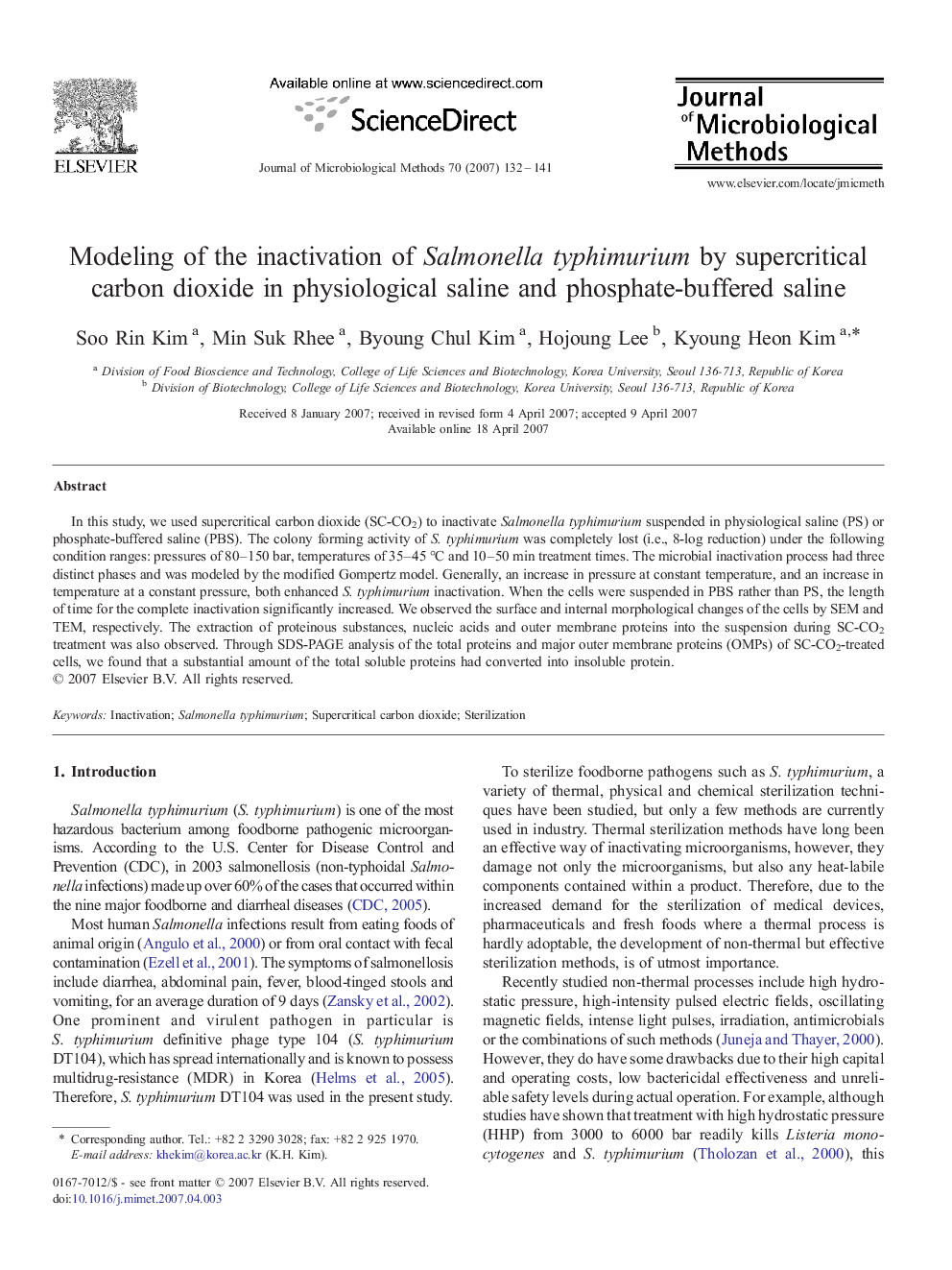| Article ID | Journal | Published Year | Pages | File Type |
|---|---|---|---|---|
| 2091772 | Journal of Microbiological Methods | 2007 | 10 Pages |
In this study, we used supercritical carbon dioxide (SC-CO2) to inactivate Salmonella typhimurium suspended in physiological saline (PS) or phosphate-buffered saline (PBS). The colony forming activity of S. typhimurium was completely lost (i.e., 8-log reduction) under the following condition ranges: pressures of 80–150 bar, temperatures of 35–45 °C and 10–50 min treatment times. The microbial inactivation process had three distinct phases and was modeled by the modified Gompertz model. Generally, an increase in pressure at constant temperature, and an increase in temperature at a constant pressure, both enhanced S. typhimurium inactivation. When the cells were suspended in PBS rather than PS, the length of time for the complete inactivation significantly increased. We observed the surface and internal morphological changes of the cells by SEM and TEM, respectively. The extraction of proteinous substances, nucleic acids and outer membrane proteins into the suspension during SC-CO2 treatment was also observed. Through SDS-PAGE analysis of the total proteins and major outer membrane proteins (OMPs) of SC-CO2-treated cells, we found that a substantial amount of the total soluble proteins had converted into insoluble protein.
